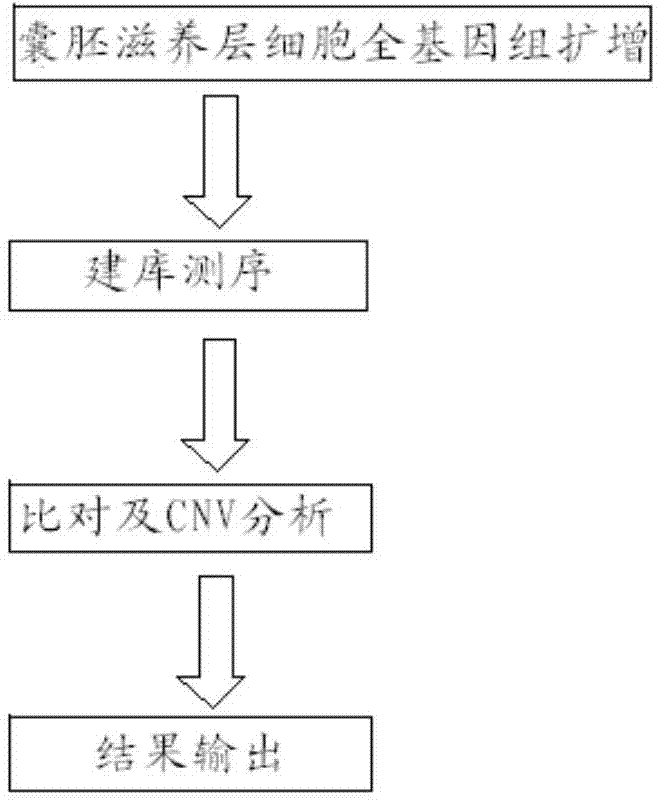Method for detecting chromosome microdeletion and micro-duplication of human embryo
A chromosomal micro-deletion and micro-duplication technology, applied in biochemical equipment and methods, microbial determination/inspection, etc., can solve the problems of low throughput, low resolution, high cost, etc., and achieve the effect of low cost and high sensitivity
- Summary
- Abstract
- Description
- Claims
- Application Information
AI Technical Summary
Problems solved by technology
Method used
Image
Examples
Embodiment 1
[0049] 1. Materials:
[0050] 1. Specimen: Blastocyst stage cells biopsied from a partner hospital. The source of the sample is the embryo samples from two cases of IVF. The parental karyotype examination is a balanced translocation carrier. Before this, an abnormal fetus was conceived and resulted in a miscarriage.
[0051] 2. Reagents: Qiagen's whole genome amplification kit, MDA product detection kit, MDA product purification kit, life library construction kit, Agencourt? AMPure? XP magnetic beads, life template preparation kit, life sequencing kit.
[0052] 3. Instruments: PCR instrument, agarose gel electrophoresis system, PGM sequencing platform of ion torrent.
[0053] 4. Consumables: 1.5ml, 0.2ml imported centrifuge tube, Ruining pipette and filter tip.
[0054] 2. Operation steps:
[0055] 1. Biopsy of trophectoderm cells
[0056] The two-step method is adopted. The first step is to punch the zona pellucida on D3 before biopsy. On D5 or D6, trophoblast cells are co...
Embodiment 2
[0153] 1. Materials:
[0154] 1. Specimen: Blastocyst stage cells biopsied by the cooperative hospital, the source of the sample is the embryo samples of three cases of IVF, the parents have suffered repeated miscarriage before.
[0155] 2. Reagents: Qiagen's whole genome amplification kit, MDA product detection kit, MDA product purification kit, life library construction kit, Agencourt? AMPure? XP magnetic beads, life template preparation kit, life sequencing kit.
[0156] 3. Instruments: PCR instrument, agarose gel electrophoresis system, PGM sequencing platform of ion torrent.
[0157] 4. Consumables: 1.5ml, 0.2ml imported centrifuge tube, Ruining pipette and filter tip.
[0158] 2. Operation steps:
[0159] 1. Biopsy of trophectoderm cells
[0160] The two-step method is adopted. The first step is to punch the zona pellucida on D3 before biopsy. On D5 or D6, trophoblast cells are collected from the 2 high-quality blastocysts formed under the microscope. Collect 5-10 tr...
PUM
 Login to View More
Login to View More Abstract
Description
Claims
Application Information
 Login to View More
Login to View More - R&D
- Intellectual Property
- Life Sciences
- Materials
- Tech Scout
- Unparalleled Data Quality
- Higher Quality Content
- 60% Fewer Hallucinations
Browse by: Latest US Patents, China's latest patents, Technical Efficacy Thesaurus, Application Domain, Technology Topic, Popular Technical Reports.
© 2025 PatSnap. All rights reserved.Legal|Privacy policy|Modern Slavery Act Transparency Statement|Sitemap|About US| Contact US: help@patsnap.com



